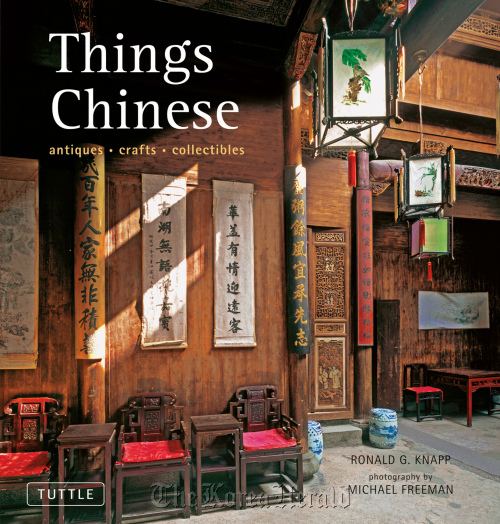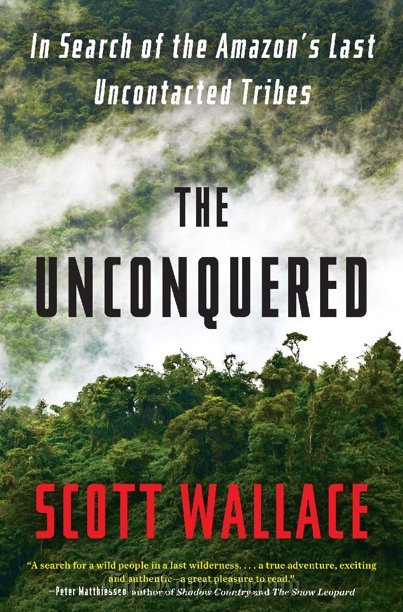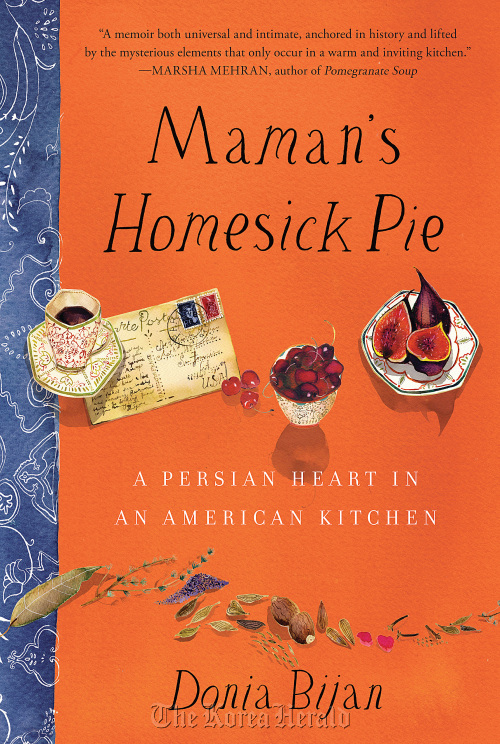Understanding all ‘Things Chinese’
Things Chinese
By Ronald G. Knapp
(Tuttle Publishing)

For many people, their only interaction with China is at a Chinese restaurant, but there is so much more to a culture dating back over the two millennia.
Let the excellent “Things Chinese” introduce you to it.
Along with a former Smithsonian magazine photographer, Michael Freeman, Ronald G. Knapp provides a simple and slender introduction to Asian culture. Filled with photos on a myriad of subjects -- wedding baskets, screens, scroll paintings, woks, modern cigarette posters, ancient tea ceremonies -- this is a book that a casual reader will find easy to swallow.
Knapp first visited China in 1965, long before it opened up to the Western world. He is currently professor emeritus at the State University of New York, New Paltz.
In his foreword he points out that things Chinese are “too numerous to be counted.” That’s true. China’s rich culture includes the influences of its neighbors -- Japan, Korea and Vietnam.
Let’s start with what’s familiar to anyone who has ever eaten Chinese food: chopsticks. The earliest pair discovered, made of metal and bone, date back to the Shang Dynasty (1600-11 BC.) -- in Western culture, that was during the Egyptian dynasties. Today chopsticks are more likely to be wood, to the detriment of forests worldwide.
Blue-and-white rice-patterned porcelain was commonly made for sale abroad during the 18th and 19th centuries. Knapp points out that the dishes were actually “a quintessential example of fine Chinese ceramics used not only by the imperial family but also by the wealthy Chinese in general.” He explains in detail how difficult these now-common dishes were to make originally.
Kites have a long history. They were used “first as instruments of warfare,” but became fun for all during the 7th century Tang dynasty. Chinese kites are very diverse. “At night, some kites flown (in Beijing’s Tiananmen Square) trail neon-lit tails,” Knapp says.
Carved wooden alcove beds would have draperies with exquisite embroidery. One thing is clear when looking at couches -- not all Chinese furniture is comfortable. No springs. Pillows were rigid oblongs made of porcelain, stiffened leather or wood. Most Westerners would shun them.
Icons like dragons, the practice of Feng shui, imposing stone guardian lions -- more commonly known as Foo or Fu dogs -- all are covered here.
What’s so enjoyable about this book is the absolute confidence you have in the writer. Knapp has written more than a dozen books on China. He knows his topic very well and obviously loves it.
So the next time when you visit a Chinese restaurant or look at a Chinese exhibit, you’ll understand its heritage better if you’ve read “Things Chinese.”
(MCT)
Expedition through Amazon jungle
“The Unconquered: In Search of the Amazon’s Last Uncontacted Tribes”
By Scott Wallace
(Crown)

Dream assignment or nightmare? An editor from National Geographic asked journalist Scott Wallace to join an expedition into the deepest wilds of the Amazon jungle to find the mysterious “People of the Arrow,” a tribe never contacted by the outside world. The expedition was to gather information about the tribe without actually meeting it. The magazine wanted an article about its leader, a charismatic defender of indigenous tribes. Was Wallace up for the job?
He was, and while the experience was pretty much a nightmare, it’s a blessing for readers of Wallace’s fascinating book, “The Unconquered.” Wallace joined a group of natives and whites who hacked their way through a jungle so thick it blotted out the sun. It was tough and dangerous going.
“Vines yanked my hat off. Thorns ripped at my sleeves,” Wallace writes. “Stands of bamboo encased in three-inch spikes threatened to impale an eyeball in a moment of carelessness.”
Oh, but there was more for him to ponder during the three-month journey. Swarms of vicious fire ants on the ground and on tree branches. Bullet ants whose sting can send an adult into shock. Huge anacondas. Jaguars. Alligatorlike caimans lurking in the night, their eyes glowing like red coals when a spotlight caught them. Not to mention poison-tipped arrows that might greet the explorers.
Leading the expedition was Sydney Possuelo, at the time an official of the Brazilian agency in charge of protecting Indians. Wallace found him to be a hero to Indians they encountered but often a moody enigma to the people he led. Wallace tells us human stories of the expedition, men persevering as individuals and as a group despite disease and hardship.
Yet Wallace also describes scenes of stunning natural beauty and eye-opening encounters with native tribes. As his expedition draws to a close, successful in its mission, he almost begins to sound nostalgic. It was so unlike his life in Manhattan, he realizes, that his experiences would soon seem unreal.
Lucky for us, he wrote them down (AP)
A memoir of food and family
Maman’s Homesick Pie: A Persian Heart in an American Kitchen
By Donia Bijan
(Algonquin Books of Chapel Hill)

“My mother cooked because it made her happy, and when you sat at her table, you shared her happiness.”
So Iranian immigrant Donia Bijan describes her mother’s idea of food, which influenced her own so much that she became a chef. And this was a great disappointment to her father, who ran his own hospital in Iran and who wanted her to become a doctor as well, or another professional, but not, as he put it, a “cook.”
Bijan explores the complex relationship between food, family and culture in her memoir “Maman’s Homesick Pie,” which is part immigrant story, part family drama and part paean to fine food.
Bijan’s family was forced to flee Iran after the fall of the Shah in the 1970s. Coming to America with barely any possessions, the family strove to find a new life in California. Bijan’s mother dove into American cuisine, learning to cook Thanksgiving dinners and other traditionally American foods while also making old favorites with bountiful California produce (including persimmons taken from neighborhood trees when it was clear they were just being left to rot).
A teenager when she first arrived, Bijan struggled to fit in, blend in, belong -- tougher when the country you come from is hostile to the one you’ve moved to, easier when you’re younger and without an already established career, as she discovers through her father’s own struggles and eventual return to Iran.
In college, Bijan can’t escape the pull of food, and goes on to cooking school in France, finally opening her own restaurant back in California.
The memoir smoothly combines stories of Bijan’s childhood in Iran and transition to life in America with pieces of her parents’ lives, and the family’s migrations after the loss of their homeland. They aren’t stories of horrible hardships and grand triumphs; rather, they are the quietly compelling stories of an ordinary family dealing with extraordinary circumstances.
Memories of family are inextricably linked to food -- the smells, the flavors, the look and feel of a dish -- and Bijan brings foods both mundane and exotic to life in the pages. Thirty recipes are included in the book: Persian specialties, French dishes that she learned in Paris, American favorites like pot roast. They all look like things it would make you happy to cook.
(MCT)
Things Chinese
By Ronald G. Knapp
(Tuttle Publishing)

For many people, their only interaction with China is at a Chinese restaurant, but there is so much more to a culture dating back over the two millennia.
Let the excellent “Things Chinese” introduce you to it.
Along with a former Smithsonian magazine photographer, Michael Freeman, Ronald G. Knapp provides a simple and slender introduction to Asian culture. Filled with photos on a myriad of subjects -- wedding baskets, screens, scroll paintings, woks, modern cigarette posters, ancient tea ceremonies -- this is a book that a casual reader will find easy to swallow.
Knapp first visited China in 1965, long before it opened up to the Western world. He is currently professor emeritus at the State University of New York, New Paltz.
In his foreword he points out that things Chinese are “too numerous to be counted.” That’s true. China’s rich culture includes the influences of its neighbors -- Japan, Korea and Vietnam.
Let’s start with what’s familiar to anyone who has ever eaten Chinese food: chopsticks. The earliest pair discovered, made of metal and bone, date back to the Shang Dynasty (1600-11 BC.) -- in Western culture, that was during the Egyptian dynasties. Today chopsticks are more likely to be wood, to the detriment of forests worldwide.
Blue-and-white rice-patterned porcelain was commonly made for sale abroad during the 18th and 19th centuries. Knapp points out that the dishes were actually “a quintessential example of fine Chinese ceramics used not only by the imperial family but also by the wealthy Chinese in general.” He explains in detail how difficult these now-common dishes were to make originally.
Kites have a long history. They were used “first as instruments of warfare,” but became fun for all during the 7th century Tang dynasty. Chinese kites are very diverse. “At night, some kites flown (in Beijing’s Tiananmen Square) trail neon-lit tails,” Knapp says.
Carved wooden alcove beds would have draperies with exquisite embroidery. One thing is clear when looking at couches -- not all Chinese furniture is comfortable. No springs. Pillows were rigid oblongs made of porcelain, stiffened leather or wood. Most Westerners would shun them.
Icons like dragons, the practice of Feng shui, imposing stone guardian lions -- more commonly known as Foo or Fu dogs -- all are covered here.
What’s so enjoyable about this book is the absolute confidence you have in the writer. Knapp has written more than a dozen books on China. He knows his topic very well and obviously loves it.
So the next time when you visit a Chinese restaurant or look at a Chinese exhibit, you’ll understand its heritage better if you’ve read “Things Chinese.”
(MCT)
Expedition through Amazon jungle
“The Unconquered: In Search of the Amazon’s Last Uncontacted Tribes”
By Scott Wallace
(Crown)

Dream assignment or nightmare? An editor from National Geographic asked journalist Scott Wallace to join an expedition into the deepest wilds of the Amazon jungle to find the mysterious “People of the Arrow,” a tribe never contacted by the outside world. The expedition was to gather information about the tribe without actually meeting it. The magazine wanted an article about its leader, a charismatic defender of indigenous tribes. Was Wallace up for the job?
He was, and while the experience was pretty much a nightmare, it’s a blessing for readers of Wallace’s fascinating book, “The Unconquered.” Wallace joined a group of natives and whites who hacked their way through a jungle so thick it blotted out the sun. It was tough and dangerous going.
“Vines yanked my hat off. Thorns ripped at my sleeves,” Wallace writes. “Stands of bamboo encased in three-inch spikes threatened to impale an eyeball in a moment of carelessness.”
Oh, but there was more for him to ponder during the three-month journey. Swarms of vicious fire ants on the ground and on tree branches. Bullet ants whose sting can send an adult into shock. Huge anacondas. Jaguars. Alligatorlike caimans lurking in the night, their eyes glowing like red coals when a spotlight caught them. Not to mention poison-tipped arrows that might greet the explorers.
Leading the expedition was Sydney Possuelo, at the time an official of the Brazilian agency in charge of protecting Indians. Wallace found him to be a hero to Indians they encountered but often a moody enigma to the people he led. Wallace tells us human stories of the expedition, men persevering as individuals and as a group despite disease and hardship.
Yet Wallace also describes scenes of stunning natural beauty and eye-opening encounters with native tribes. As his expedition draws to a close, successful in its mission, he almost begins to sound nostalgic. It was so unlike his life in Manhattan, he realizes, that his experiences would soon seem unreal.
Lucky for us, he wrote them down (AP)
A memoir of food and family
Maman’s Homesick Pie: A Persian Heart in an American Kitchen
By Donia Bijan
(Algonquin Books of Chapel Hill)

“My mother cooked because it made her happy, and when you sat at her table, you shared her happiness.”
So Iranian immigrant Donia Bijan describes her mother’s idea of food, which influenced her own so much that she became a chef. And this was a great disappointment to her father, who ran his own hospital in Iran and who wanted her to become a doctor as well, or another professional, but not, as he put it, a “cook.”
Bijan explores the complex relationship between food, family and culture in her memoir “Maman’s Homesick Pie,” which is part immigrant story, part family drama and part paean to fine food.
Bijan’s family was forced to flee Iran after the fall of the Shah in the 1970s. Coming to America with barely any possessions, the family strove to find a new life in California. Bijan’s mother dove into American cuisine, learning to cook Thanksgiving dinners and other traditionally American foods while also making old favorites with bountiful California produce (including persimmons taken from neighborhood trees when it was clear they were just being left to rot).
A teenager when she first arrived, Bijan struggled to fit in, blend in, belong -- tougher when the country you come from is hostile to the one you’ve moved to, easier when you’re younger and without an already established career, as she discovers through her father’s own struggles and eventual return to Iran.
In college, Bijan can’t escape the pull of food, and goes on to cooking school in France, finally opening her own restaurant back in California.
The memoir smoothly combines stories of Bijan’s childhood in Iran and transition to life in America with pieces of her parents’ lives, and the family’s migrations after the loss of their homeland. They aren’t stories of horrible hardships and grand triumphs; rather, they are the quietly compelling stories of an ordinary family dealing with extraordinary circumstances.
Memories of family are inextricably linked to food -- the smells, the flavors, the look and feel of a dish -- and Bijan brings foods both mundane and exotic to life in the pages. Thirty recipes are included in the book: Persian specialties, French dishes that she learned in Paris, American favorites like pot roast. They all look like things it would make you happy to cook.
(MCT)








![[Kim Seong-kon] Democracy and the future of South Korea](http://res.heraldm.com/phpwas/restmb_idxmake.php?idx=644&simg=/content/image/2024/04/16/20240416050802_0.jpg&u=)







![[KH Explains] Hyundai's full hybrid edge to pay off amid slow transition to pure EVs](http://res.heraldm.com/phpwas/restmb_idxmake.php?idx=652&simg=/content/image/2024/04/18/20240418050645_0.jpg&u=20240418181020)

![[Today’s K-pop] Zico drops snippet of collaboration with Jennie](http://res.heraldm.com/phpwas/restmb_idxmake.php?idx=642&simg=/content/image/2024/04/18/20240418050702_0.jpg&u=)